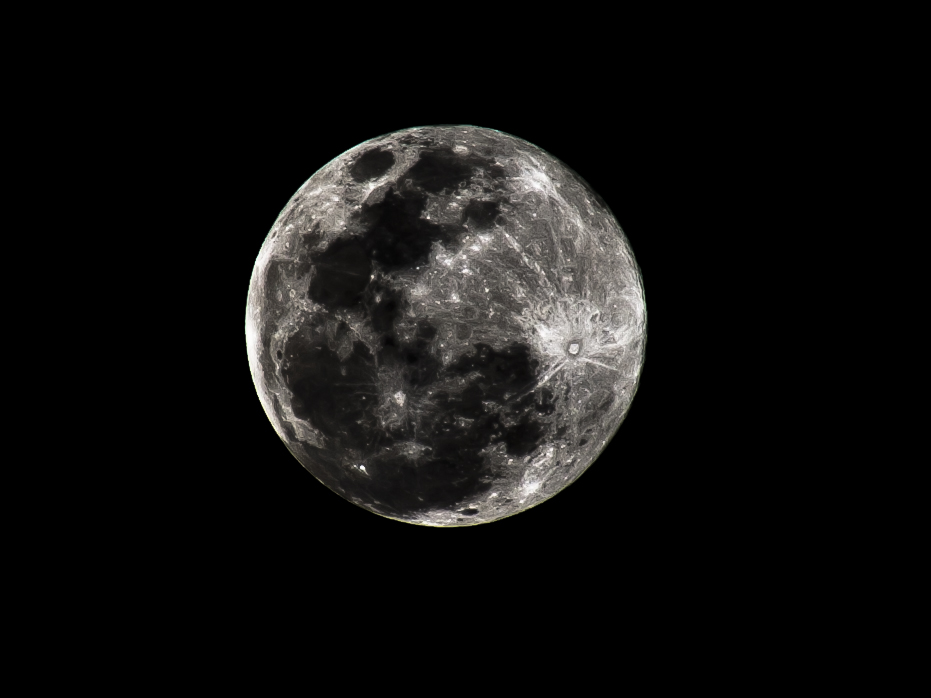
Since the beginning of 2016, most of the U.S. has been tense because of the presidential election. With the end of that tumultuous event comes something soothing: A supermoon.
The supermoon will happen on Nov. 14, and according to NASA, it will be the second one of the year. The first took place on Oct. 16, and the last one will take place on Dec. 16.
The moon will appear 30,000 miles closer, 14 percent larger and 30 percent brighter, Ron Vanderhule, president of the Ogden Astronomical Society, said.
The society has been around since the 1970s and meets at Weber State in the Ott Planetarium.
“Normally the moon is about the size of an aspirin when you hold it at arm’s length up to the sky,” Vanderhule said. “On Monday it will be about the size of an Alka-Seltzer.”
Only in recent years has the phenomenon popularly been called a supermoon, according to NASA.
Originally a term from modern astrology for a new or full moon that occurs when the moon is within 90 percent of its closest approach to Earth in a given orbit, supermoon now refers more broadly to a full moon that is closer to Earth than average, according to an article NASA published in October.
“There’s not a planet or moon that is in a perfectly circular orbit,” Vanderhule said. “Every planet or moon has an elliptical path, which means that at some point that moon is closer in its path than it is in other points of its orbit.”
During the full moon on Monday, the sun will be directly opposite of the moon said Vanderhule. This will be the closest supermoon since 1948. Vanderhule also said the best viewing times will be at either sunrise or sunset.
According to EarthSky, the moon won’t come this close again until November 2034. EarthSky also suggests that the best time to see the supermoon in Mountain Standard Time will be at 6:52 a.m. on Nov. 14.
The moon will reach perigee —the moon’s closest point to Earth for this month— within one hour of that time.
The supermoon is also named The Beaver Moon, according to Space.com. The Beaver Moon is called this because it arrives at the time of year in the Northern Hemisphere when hunters would set traps before the waters froze over, to ensure they had enough warm furs for the winter.
The Ogden Astronomical Society will join with Syracuse High School in Davis County to have a party on the football field to view the supermoon.
“A lot of the astronomy members will be down there, including myself,” Vanderhule said.
A supermoon makes people want to break out their telescopes and cameras, but according to Vanderhule, using a telescope doesn’t work as well as one may think.
“It hurts your eyes for one thing,” Vanderhule said. “A partial moon is OK to look at because the sun is hitting it at an angle. In this case, the sun is hitting straight on and all the light is coming back at you.”
Community members and WSU students alike are ready to see the biggest supermoon since 1948. Alicia Martinez, student at WSU, said that she and her kids will be up looking at the moon.
“It’s not going to happen again, so that’s why we want to see it,” Martinez said. “We’re going to head up to the mountains for a clearer view.”
Martinez also spoke about how an event like this is spiritual. She said that there is a feminine connection to the moon that she wants to celebrate that with her kids.
“We’ve been through a lot lately, and it’s a healing thing,” Martinez said.
WSU student Spencer Hart also said he will be taking time to observe the supermoon.
“I haven’t decided how I’ll view it though,” Hart said. “I’m in an astronomy class so I feel a little obligated to go somewhere.”
Similarly, community member Shelly Stilke said that she is excited for the Monday’s moon. “Anything about space, the stars, planets, I’m in.”
After the supermoon on Nov. 14, the third and final supermoon of 2016 will occur on Dec.14.








